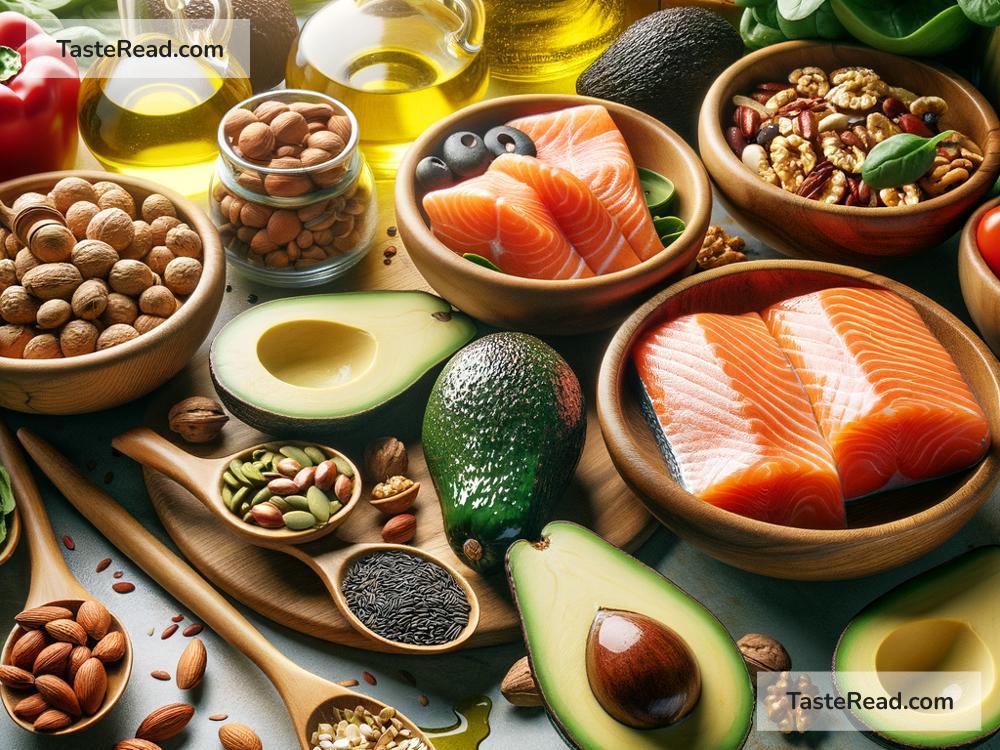Exploring the Benefits of Cooking with Healthy Fats
When you think about fats in food, do you picture something unhealthy? For years, fats were unfairly labeled as “bad” ingredients. Many people heard warnings to avoid fats entirely. But here’s the good news: not all fats are created equal. In fact, some fats are not only healthy but essential for your body to thrive. Cooking with healthy fats can improve your meals, provide key nutrients, and even help you feel better.
Let’s dive into why healthy fats matter, where to find them, and how you can include them in your cooking.
What Are Healthy Fats?
Healthy fats come from natural sources and are good for your body when eaten in moderation. These fats give you energy, support your body’s growth, and help absorb vitamins like A, D, E, and K. They are also beneficial for your brain, heart, and skin.
Healthy fats are usually divided into two main types:
-
Monounsaturated Fats: Found in foods like avocados, olives, nuts (almonds, cashews, etc.), and seeds. These fats are known for helping lower bad cholesterol and improving heart health.
-
Polyunsaturated Fats: Found in fatty fish (like salmon, mackerel, and sardines), walnuts, and sunflower seeds. This group includes omega-3 and omega-6 fatty acids, which are essential for brain function and reducing inflammation in the body.
There’s also a third fat worth mentioning: natural saturated fats, found in foods like coconut oil, grass-fed butter, and certain dairy products. For years, these fats were misunderstood, but research suggests they can be part of a healthy diet when consumed in small amounts.
Why Are Healthy Fats Important?
Healthy fats play a role in many vital processes in your body. Here are some key benefits:
-
Boosts Energy: Fats are a concentrated source of energy, which helps keep you active and alert throughout the day.
-
Improves Heart Health: Good fats, like those in olive oil and avocados, help reduce “bad” cholesterol levels while increasing “good” cholesterol. This can lower your risk of heart disease.
-
Supports Brain Function: Your brain is made up of around 60% fat! Omega-3 fatty acids, found in fatty fish and nuts, are known for supporting memory, focus, and mental health.
-
Aids Absorption of Nutrients: Some vitamins – like A, D, E, and K – need fat to be absorbed properly. Healthy oils and fats in your diet make sure you get the full benefit of these vitamins.
-
Keeps You Feeling Full: Healthy fats slow digestion, helping you feel satisfied after your meals. If you’re trying to avoid unhealthy snacking, including healthy fats in your cooking can help.
Common Misunderstandings About Fats
One of the biggest misconceptions about fats is that eating them leads to weight gain. While overeating any food can cause weight gain, moderate amounts of healthy fats can actually help keep your weight stable. Fats are filling and prevent overeating. Plus, they support your overall health, making them crucial for a balanced diet.
Another misunderstanding is thinking that all fats are bad for cholesterol levels. The truth is, healthy fats improve cholesterol profiles by raising levels of good cholesterol and reducing harmful LDL cholesterol. It’s important to avoid trans fats, the truly unhealthy fats often found in processed and fried foods, but natural fats from avocados, fish, and oils are excellent choices.
How to Cook With Healthy Fats
Now that we understand why healthy fats are so beneficial, how can you start using them in your kitchen? Here are some simple ideas:
-
Cook With Olive Oil: Olive oil is a versatile and heart-healthy fat perfect for sautéing vegetables or drizzling over salads. Look for extra virgin olive oil for the best quality.
-
Add Avocado to Meals: Avocados aren’t just for guacamole! Slice them onto sandwiches, mash them over toast, or blend them into smoothies for a creamy, nutritious boost.
-
Use Coconut Oil: Coconut oil is great for baking or cooking with high heat. Its slightly sweet flavor works well in stir-fries, curries, and even desserts.
-
Include Fatty Fish in Your Diet: Salmon, tuna, and mackerel are packed with omega-3 fatty acids. Grill or bake them for a tasty and healthy main dish.
-
Snack on Nuts and Seeds: Almonds, walnuts, chia seeds, and flaxseeds make great snacks or toppings for yogurt and oatmeal.
-
Choose Grass-Fed Butter or Ghee: Traditional butter and ghee are natural sources of fat that can add flavor to dishes without being unhealthy when eaten in small amounts.
A Few Tips for Balance
While healthy fats are great, it’s important not to go overboard. Eating too much of anything – even the good stuff – can lead to excess calories. Use fats wisely to enhance your meals, but pair them with other wholesome ingredients like vegetables, lean proteins, and whole grains.
Final Thoughts
Cooking with healthy fats doesn’t have to be complicated or intimidating. By using ingredients like olive oil, nuts, fatty fish, and avocados, you can enjoy delicious meals that are good for your body and wellbeing. Healthy fats help your heart, boost your brain, and keep you feeling energized.
So the next time you’re planning a meal, don’t shy away from adding a splash of olive oil or a handful of nuts. Small changes like these can make a big difference over time. Embrace healthy fats, and enjoy the journey of cooking healthier and tastier food for yourself and your family!


